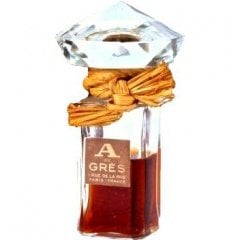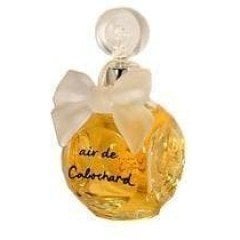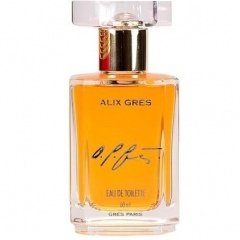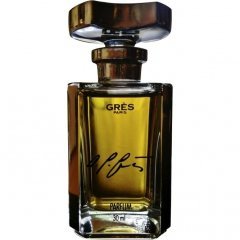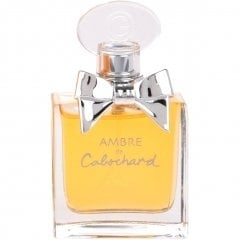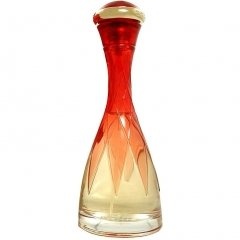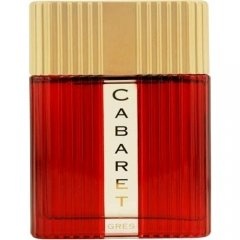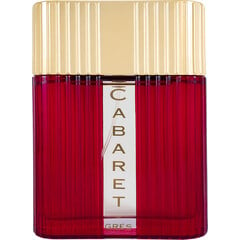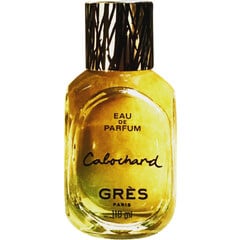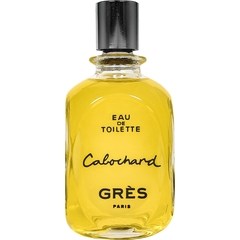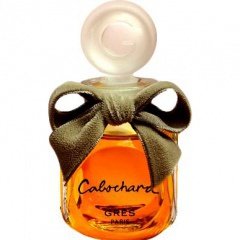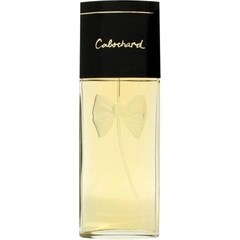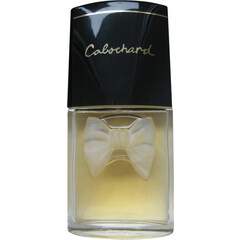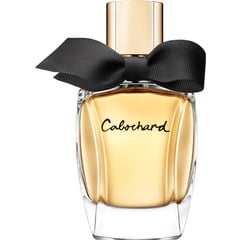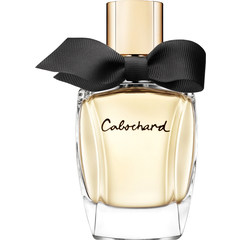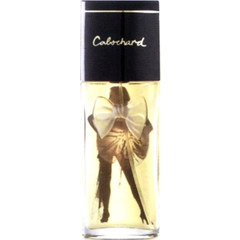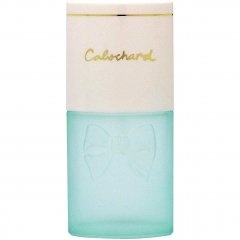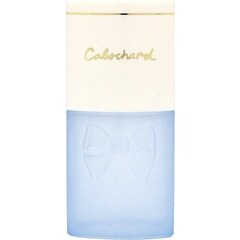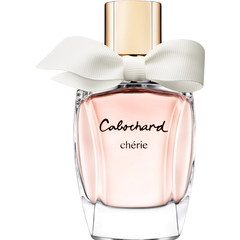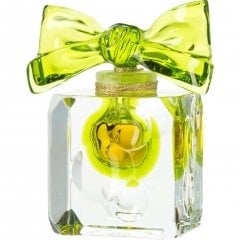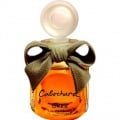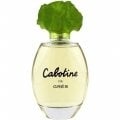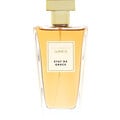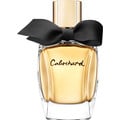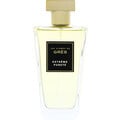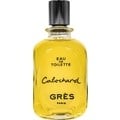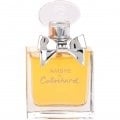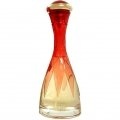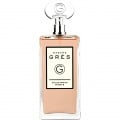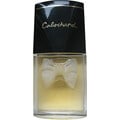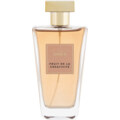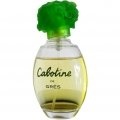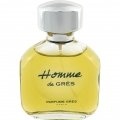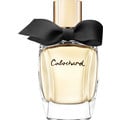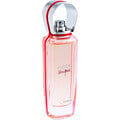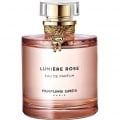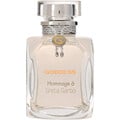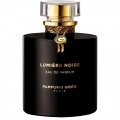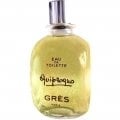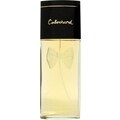Grès
 France Pronunciation
France Pronunciation"I always wanted to be a sculptor. I don't care whether I work with fabrics or stones," said Madame Grès, one of the greatest couturières of the 20th century, aptly describing... Read more
Interesting Facts
"I always wanted to be a sculptor. I don't care whether I work with fabrics or stones," said Madame Grès, one of the greatest couturières of the 20th century, aptly describing her style: fashion as a means of forming a kind of sculpture together with the body that wears it. Her dresses are often reminiscent of ancient Greek or Roman garments: classic-looking, long and artfully pleated.
In 1903, born Germaine Krebs, she decided to go into fashion after dabbling in sculpture and, after an apprenticeship as a milliner, launched her first collections under the name Alix Barton. From 1942 she worked under the name Grès (an anagram of the letters of the first name of her husband, the Russian painter Serge Czerefkov, who traveled to French Polynesia in 1937 and decided to stay there). During the German occupation she designed an entire collection in the Tricolore colors of blue-white-red, her shop was closed and she left Paris. In 1944 she returned after the occupation and from then on she enjoyed great and ever greater success with her fashion. In public she was always seen with an angora turban wrapped around her head, which became her personal trademark.
In 1956 she returned from a trip to India with deeply inspiring scent impressions and began (with the help of perfumer Bernard Chant) to compose her own perfume: "Cabochard" was launched in 1958. The legendary fragrance set a trend (chypre with leather) and the foundation for the perfume house Parfums Grès.
In 1982, Madame Grès had to sell the perfume house, and two years later, the fashion house as well. While the latter was discontinued, the perfume house passed through several hands and has been a Swiss company since 2001.
In 1993, the great fashion designer died. Of her old classics, only "Cabochard" is still produced. Since 1990 (the beginning of "Cabotine") new fragrances have been released by Grès.
Lalique
Marie-Claude Lalique launched the first perfume of this brand in 1992 - but strictly speaking, the legendary connection between Lalique and perfume began much earlier, namely with the resourcefulness of her grandfather René.
Yet René Lalique actually wanted to become a jewelry designer. That's why the northern Frenchman, born in 1860, first trained as a jeweler and then as a graphic artist, so that he could sell his designs as a freelance artist. But obviously this was not enough for the young man, he took over a jeweler's workshop, where from then on he implemented his ideas with his own hands. René Lalique's jewelry was in demand: he merged his themes, flora, fauna and the feminine with the Art Nouveau taste of the time and implemented this with non-precious materials, which met the then newly emerging demand for beautiful things for the masses.
But even this success in jewelry was not enough for René Lalique. He looked for other ways to embellish people's homes with the objects he designed. And he found what he was looking for: in 1907 he met the perfumer and businessman François Coty, for whose fragrances he not only designed and produced flacons for the first time, but also revolutionized the product 'perfume', because from then on as much value was attached to the packaging as to the content. The flacons were to reflect the fragrances they held and at the same time serve as a visual feature of the respective companies. At first, René Lalique produced exclusively for François Coty, but soon he was also supplying other perfume manufacturers such as Roger & Gallet, D'Orsay and Molinard with his small glass works of art.
And René Lalique's creative urge continued. By now completely absorbed by the material glass, he expanded his company's portfolio with monumental glass art, sacred art and table glass art. In doing so, René Lalique always made sure to combine quality with quantity. He understood better than anyone that the future lay in mass production and protected his innovations with various patents, because Lalique's creations were already being copied in his day.
After René Lalique's death in 1945, his son Marc took over a flourishing company, which he again reoriented. This time, the higher light refraction of the material crystal glass was exploited, which is why Marc Lalique specialized the production on this material, but without neglecting the perfume flacons.
Thus it was the son of the founder who designed probably the most famous flacon from the house of Lalique: "L'Air du Temps", whose gently curved flacon with the two doves as flacon stopper represented the peace after the Second World War, which was now finally in the air.
In 1977, after Marc Lalique's death, his daughter Marie-Claude took over the company and she, too, focused on renewal and diversification to meet mass tastes. And under her leadership, for the first time, the Lalique name stands not only as the producer of the packaging, but also as the producer of the contents. Quite simply, "Lalique" is the name given to the perfume, the first to be followed by many more.
Even after the family business was sold to Pochet in 1994 and again to Lalique Group SA in 2008, Lalique's portfolio, both in glass and perfume, is always undergoing renewal and reinvention, just as its founding father René Lalique did. And just as René Lalique was successful with that strategy, today's company continues to unerringly meet the tastes of the present with its exquisite products.
In 1903, born Germaine Krebs, she decided to go into fashion after dabbling in sculpture and, after an apprenticeship as a milliner, launched her first collections under the name Alix Barton. From 1942 she worked under the name Grès (an anagram of the letters of the first name of her husband, the Russian painter Serge Czerefkov, who traveled to French Polynesia in 1937 and decided to stay there). During the German occupation she designed an entire collection in the Tricolore colors of blue-white-red, her shop was closed and she left Paris. In 1944 she returned after the occupation and from then on she enjoyed great and ever greater success with her fashion. In public she was always seen with an angora turban wrapped around her head, which became her personal trademark.
In 1956 she returned from a trip to India with deeply inspiring scent impressions and began (with the help of perfumer Bernard Chant) to compose her own perfume: "Cabochard" was launched in 1958. The legendary fragrance set a trend (chypre with leather) and the foundation for the perfume house Parfums Grès.
In 1982, Madame Grès had to sell the perfume house, and two years later, the fashion house as well. While the latter was discontinued, the perfume house passed through several hands and has been a Swiss company since 2001.
In 1993, the great fashion designer died. Of her old classics, only "Cabochard" is still produced. Since 1990 (the beginning of "Cabotine") new fragrances have been released by Grès.
Lalique
Marie-Claude Lalique launched the first perfume of this brand in 1992 - but strictly speaking, the legendary connection between Lalique and perfume began much earlier, namely with the resourcefulness of her grandfather René.
Yet René Lalique actually wanted to become a jewelry designer. That's why the northern Frenchman, born in 1860, first trained as a jeweler and then as a graphic artist, so that he could sell his designs as a freelance artist. But obviously this was not enough for the young man, he took over a jeweler's workshop, where from then on he implemented his ideas with his own hands. René Lalique's jewelry was in demand: he merged his themes, flora, fauna and the feminine with the Art Nouveau taste of the time and implemented this with non-precious materials, which met the then newly emerging demand for beautiful things for the masses.
But even this success in jewelry was not enough for René Lalique. He looked for other ways to embellish people's homes with the objects he designed. And he found what he was looking for: in 1907 he met the perfumer and businessman François Coty, for whose fragrances he not only designed and produced flacons for the first time, but also revolutionized the product 'perfume', because from then on as much value was attached to the packaging as to the content. The flacons were to reflect the fragrances they held and at the same time serve as a visual feature of the respective companies. At first, René Lalique produced exclusively for François Coty, but soon he was also supplying other perfume manufacturers such as Roger & Gallet, D'Orsay and Molinard with his small glass works of art.
And René Lalique's creative urge continued. By now completely absorbed by the material glass, he expanded his company's portfolio with monumental glass art, sacred art and table glass art. In doing so, René Lalique always made sure to combine quality with quantity. He understood better than anyone that the future lay in mass production and protected his innovations with various patents, because Lalique's creations were already being copied in his day.
After René Lalique's death in 1945, his son Marc took over a flourishing company, which he again reoriented. This time, the higher light refraction of the material crystal glass was exploited, which is why Marc Lalique specialized the production on this material, but without neglecting the perfume flacons.
Thus it was the son of the founder who designed probably the most famous flacon from the house of Lalique: "L'Air du Temps", whose gently curved flacon with the two doves as flacon stopper represented the peace after the Second World War, which was now finally in the air.
In 1977, after Marc Lalique's death, his daughter Marie-Claude took over the company and she, too, focused on renewal and diversification to meet mass tastes. And under her leadership, for the first time, the Lalique name stands not only as the producer of the packaging, but also as the producer of the contents. Quite simply, "Lalique" is the name given to the perfume, the first to be followed by many more.
Even after the family business was sold to Pochet in 1994 and again to Lalique Group SA in 2008, Lalique's portfolio, both in glass and perfume, is always undergoing renewal and reinvention, just as its founding father René Lalique did. And just as René Lalique was successful with that strategy, today's company continues to unerringly meet the tastes of the present with its exquisite products.
Content by
 Louce
Louce
 Louce
Louce

